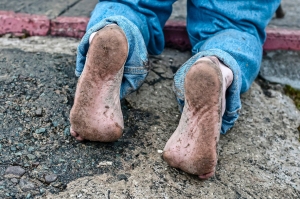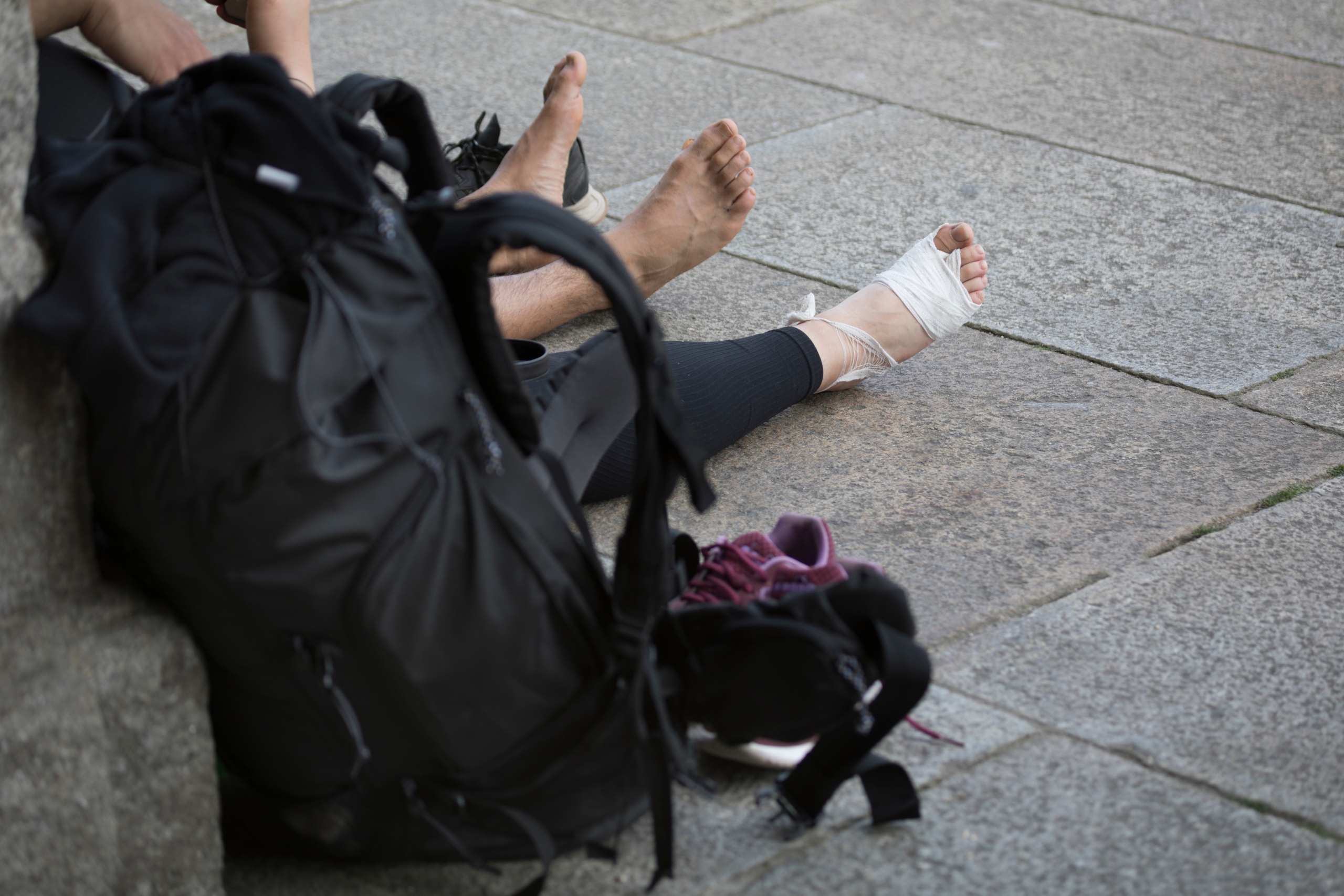“Walking barefoot is like coming home.” — Thich Nhat Hanh
There is something profoundly ancestral about the direct contact between skin and earth. It goes beyond the physical—a silent dialogue between body and world. Walking barefoot on a pilgrimage is not just an act of devotion but an experience of transformation, a ritual carrying meanings as old as humanity itself.
In a world of paved roads and cushioned shoes, the idea of walking long distances barefoot seems almost unthinkable. Yet, for most of history, it was the norm. Pilgrims, monks, and seekers from various traditions chose to walk without shoes as a way to purify themselves, connect with the divine, and rediscover their essence.
But what happens to the body and mind when feet meet the earth? What are the benefits of a barefoot pilgrimage? And what challenges—both physical and psychological—come with this radical experience?
The History of Barefoot Walking: Between Faith and Resilience
From Buddhist monks to Christian saints, from Indian yogis to Indigenous elders, walking barefoot has long symbolized humility and spiritual connection. Removing shoes is an act of surrender—letting go of ego, protection, and comfort to embrace vulnerability.
- Christianity: In biblical tradition, Moses is told to remove his sandals before the burning bush because he is standing on sacred ground. Many medieval pilgrims, traveling the Camino de Santiago or the Via Francigena, walked barefoot as an act of penance. Some traditions, like climbing Croagh Patrick in Ireland, still preserve this practice.
- Buddhism: Theravāda monks walk barefoot during their morning alms rounds—not just for simplicity but as a mindfulness practice, grounding them in the present.
- Hinduism: Pilgrims ascending the sacred hill of Palani in India do so barefoot, embracing the physical challenge as part of their devotion.
- Indigenous Traditions: Aboriginal Australians, during their walkabouts, travel vast distances barefoot, attuned to the land’s vibrations and reading the earth like an open book.

Across cultures, walking barefoot has always been more than a physical act—it is a spiritual and psychological exercise in endurance, awareness, and connection.
The Psychology of Walking Barefoot
Taking off one’s shoes is more than just a physical shift—it is an act of letting go. Walking barefoot invites a return to vulnerability and, at the same time, a discovery of inner strength.
Psychology confirms what many traditions have long understood: walking barefoot reduces stress and deepens presence. The feet receive constant sensory feedback from the ground, forcing the brain to stay engaged with each step. Walking is no longer automatic—it becomes intentional.
The uneven terrain becomes a teacher. Every stone, root, or patch of soft earth brings awareness. The initial discomfort transforms into resilience. The unfamiliar becomes familiar. Over time, one learns to trust the body’s ability to adapt and navigate discomfort.
Many meditative practices incorporate barefoot walking for this reason. In Zen Buddhism, kinhin, or walking meditation, emphasizes slow, mindful steps. Walking barefoot naturally slows the pace, bringing full attention to the present moment.
The Barefoot Body: Strength and Balance
Modern science supports what spiritual traditions have long practiced: walking barefoot has profound effects on the body.

The human foot is a highly intricate structure—26 bones, 33 joints, and over 100 muscles and tendons designed to adapt to natural terrain. However, modern footwear, with its excessive cushioning and support, has weakened these natural mechanics.
Walking barefoot:
- Strengthens foot muscles by engaging them fully, improving balance and stability.
- Enhances posture and spinal alignment by promoting a more natural gait.
- Reduces impact injuries, as barefoot walking encourages a lighter, more efficient step.
Some studies suggest that grounding, or direct skin contact with the earth, has physiological benefits, including reduced inflammation and improved sleep. When bare feet touch the ground, they absorb electrons from the earth, which may counteract oxidative stress in the body.
However, transitioning to barefoot walking requires patience. Modern feet, accustomed to the protection of shoes, are often sensitive and weak. Walking long distances barefoot without preparation can cause blisters, cuts, and overuse injuries.
Challenges of Barefoot Pilgrimage
Walking barefoot on soft earth is one thing—navigating rocky trails, asphalt roads, or extreme climates is another.
- Pain and Adaptation: Most people’s feet are not conditioned for long, unprotected walks. It takes weeks or months to build up the strength and tolerance needed for rough terrain.
- Hygiene and Safety: Walking barefoot increases the risk of cuts, infections, or exposure to harmful bacteria and fungi. Awareness and foot care are essential.
- Climate Conditions: Extreme cold can lead to frostbite, while hot surfaces can cause burns.
- Social Perception: In many places, being barefoot in public is seen as unconventional, even unacceptable. In urban settings, it can draw unwanted attention or social stigma.
Walking Barefoot: A Return to Essence
Every step of a pilgrimage is an act of intention. Walking barefoot amplifies this, making each movement more vivid and connected.
The feeling of earth beneath bare feet is more than physical—it is symbolic of a return. A return to nature, simplicity, and an older way of being.
Barefoot pilgrimage is not for everyone. It demands resilience, patience, and a willingness to step beyond comfort. But for those who embrace it, the experience is profound.
Because, in the end, it is not just about walking.
It is about feeling.





